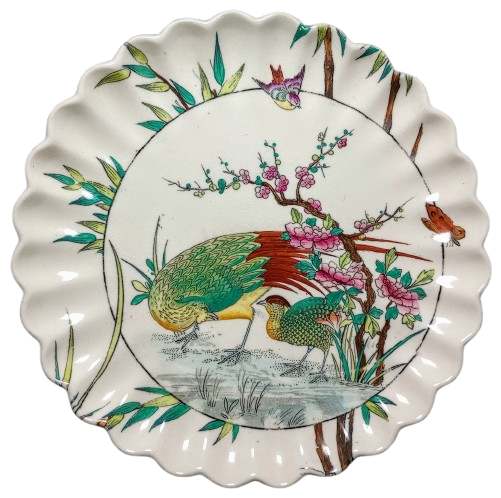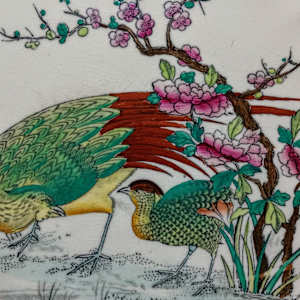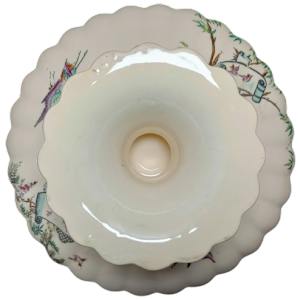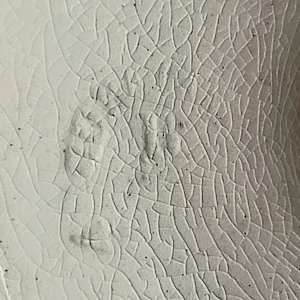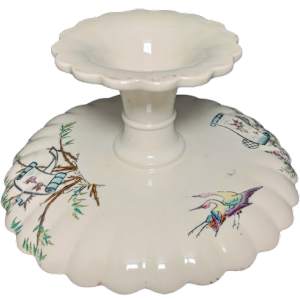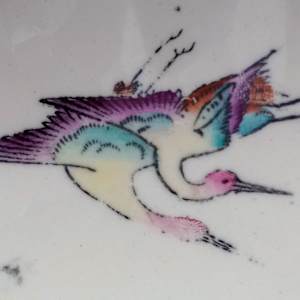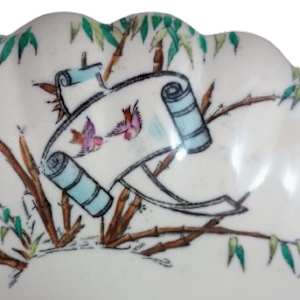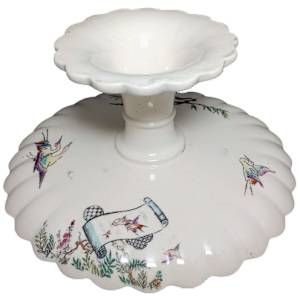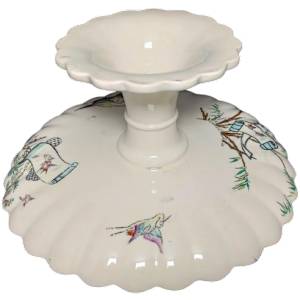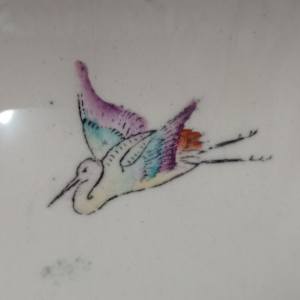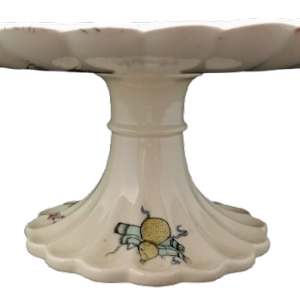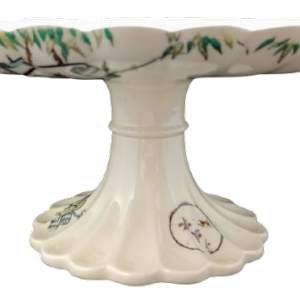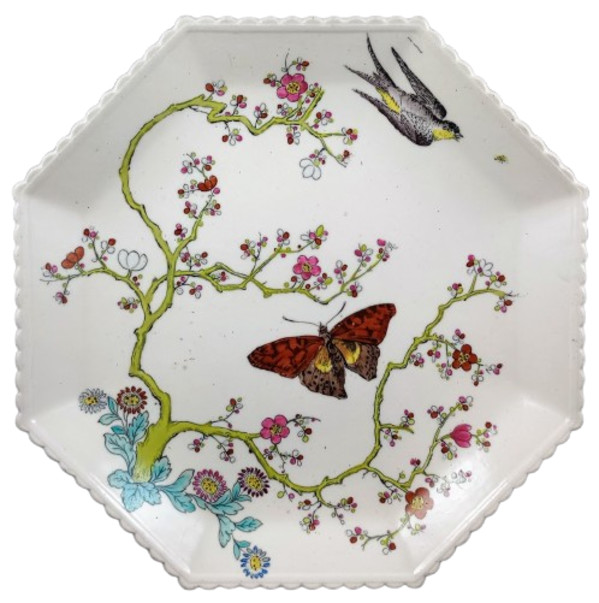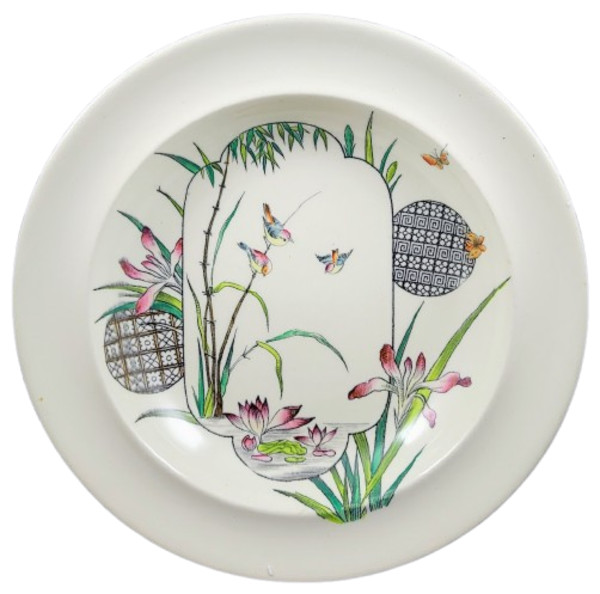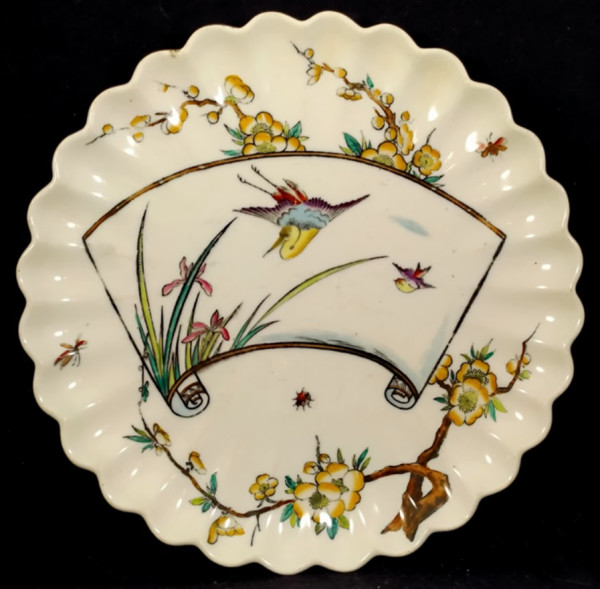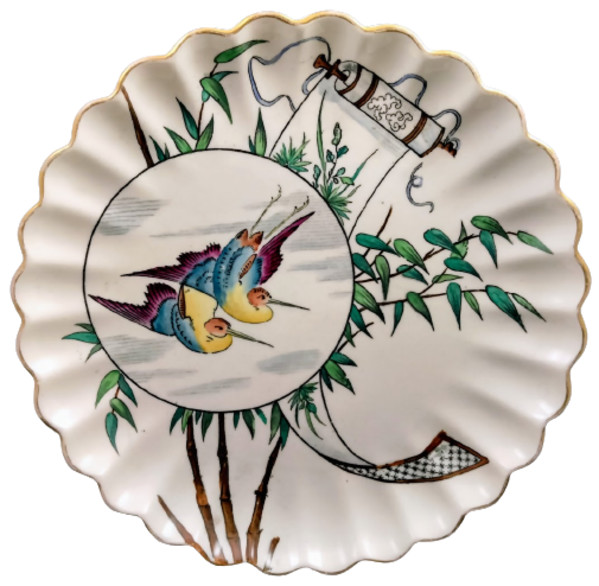- W. T. Copeland & Sons
- 2/428, 1876
- Earthenware
- 8.75 x 4 in (22.23 x 10.16 cm)
-
Not For Sale
Compote, 8.75 x 4 inches. Black transfer with polychrome clobbering. Impressed maker's mark for Copeland. Although missing a painted pattern number, this pattern belongs to the 2/428 pattern series introduced in 1876. This particular pattern features a large circular cartouche with a mother pheasant and chick on grassy ground, with peonies and a branch of prunus blossoms behind them. A songbird, a butterfly, and some blades of grass break the border of the cartouche at the top, right, and left. The cartouche is superimposed over bamboo stalks. On the underside there are four small motifs: a single crane in flight, two cranes in flight, a blooming wisteria branch with songbirds framing a horizontal scroll decorated with songbirds and two cartouches filled with geometric patterns, and bamboo branches framing a horizontal scroll decorated with two songbirds. The base is decorated with three small motifs: a gourd vase and rolled scroll, a circular cartouche filled with three songbirds, and a branch of prunus blossoms.
W. T. Copeland was the only son of William Copeland, partner of Josiah Spode in the Stoke Potteries, of Staffordshire and of Portugal Street, London. He succeeded his father as head of the porcelain firm in Portugal Street, London and eventually bought out the interests of the Spode family in the business in the Potteries and London. He ran the business in partnership with Thomas Garrett between 1833 and 1847. After the dissolution of the Copeland and Garrett partnership, it traded as W. T. Copeland and Sons. (1847-1976). In 1866 Copeland was appointed china and glass manufacturer to the Prince of Wales.
- Subject Matter: Aesthetic (Cartouche)
- Collections: Aesthetic Transferware, W. T. Copeland & Sons
